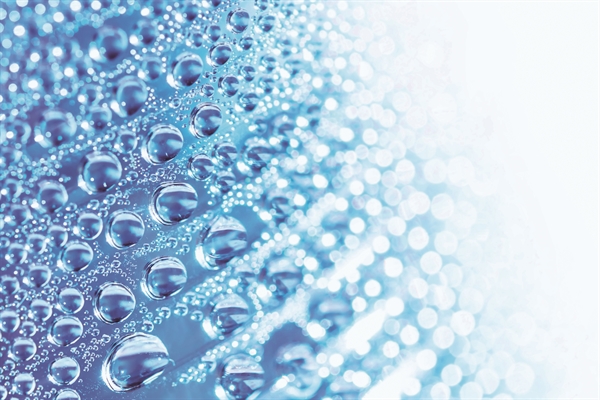Humidification advice for contractors
Most HVAC contractors don’t regularly undertake humidification projects so building up enough experience to avoid the possible pitfalls can be difficult. Graham Cash, NSW & ACT Sales Manager at Condair Pty Ltd, gives advice on what any contractor taking on a humidifier project ought to consider.
Beware value engineering
One size does not fit all when it comes to humidifiers. When deciding whether to install a lower cost alternative to a specified system, it’s important to fully understand the reasons behind the initial selection. We often see manufacturing applications that need very precise humidity control being served with electrode boiler humidifiers that are not capable of providing the required level of control.
Typically humidity control of approximately 2 to 3%RH needs resistive steam humidifiers. Installing an electrode boiler humidifier is less expensive but this technology can usually only deliver around ±5%RH. Although this type of humidifier is ideal for many applications, not sticking to a higher specified unit without first researching and considering all the selection criteria can cause headaches for both client and contractor.
How to save costs
Traditionally humidifiers have been seen as expensive to run due to the most popular technologies generating steam with electricity. However, there are several alternatives now for building operators looking to reduce the operating costs of humidification. Gas-fired steam humidifiers present at least a 60% saving on energy costs when compared to electric steam. They have higher capital costs but for any application needing more than 40kg/h with average use, this technology presents a rapid return on investment.
In-duct adiabatic humidifiers, which either spray or evaporate moisture, present a similar saving when combined with gas-fired pre-heating. For further savings, combining adiabatic humidifiers with heat recovery, such as thermal wheels or run-around coils, to provide the pre-heating can reduce the on-going cost of humidity control to less than 10% of electric steam systems.
Adiabatic humidification also offers the benefit of evaporative cooling. This means the humidifier can be used in the summer to provide very economic cooling to reduce the load on mechanical chillers.
Plan early
There are many things that need to be considered when deciding on product selection and humidification strategy. The earlier in the project the humidification is thought about, the more options are available and potentially a better solution can be provided.
For instance, what is the available duct section length to accommodate the absorption distance? Steam introduced into a duct will need space to fully absorb in order to prevent condensation. This distance can be shortened by using specialist short-evaporation steam lances but the overall length will depend on the quantity of steam being introduced, the air velocity and the air-on condition.
Considering the available energy sources can lead to a dramatic reduction in overall operating costs. In certain circumstances where an existing steam supply is available, a live-steam humidifier can be utilised to provide dry steam to an AHU.
If a building has capacity in its gas-fired heating system, fitting an adiabatic humidifier could be more economical from an operational cost perspective, when taking into consideration the additional pre-heating requirements. This is, of course, necessary to ensure enough moisture from the cold water humidifier can be fully absorbed for the desired supply air condition to be achieved. Without this available heat capacity, often steam humidification is the only practical solution when retrofitting.
High air velocity may prevent evaporative humidifiers being an available option, due to unevaporated droplets being carried into the airstream.
Water quality
The quality of the mains water in a building must be reviewed prior to humidifier selection. An average water quality of between 125-1250μS/cm is required for an electrode boiler steam humidifier. Below or above this level and an electrode humidifier may experience issues either boiling the water or producing too much scale. Gas-fired or resistive humidifiers can cope with a wider range of water qualities. RO water treatment is also a good solution for humidification in hard water areas, as the majority of the minerals are removed from the supply water before being introduced to the humidifier.
Control level
The level of humidity control needed is a major determining factor in humidifier selection. Although resistive steam humidifiers are a popular choice for close control, recently developed cold water adiabatic systems can provide a similar level of control. Hybrid humidifiers, such as the Condair DL, combine spray and evaporative technology and can deliver ±2%RH control. Gas-fired, electrode boiler or evaporative humidifiers are all capable of delivering around ±10%RH, which is fine for most applications related to human health.
Expert advice
One of the most important things to consider when setting out on a humidifier project is to get good advice from a competent supplier. Initially, this obviously includes the product selection, so approaching a supplier with a comprehensive range allows for the most appropriate product to be proposed for a project. Also, review what support will be provided prior to and during an install. Being able to obtain clear guidance throughout the project will not just reduce the time on-site but also reduce the possibility of errors resulting in a return visit. Lastly, all humidifiers need to be maintained so check whether the supplier has spare parts available in Australia for critical installations and can undertake to service the humidifier directly or provide technical assistance, should you wish to continue to support the client in the long-term.

Author: Graham Cash, NSW & ACT Sales Manager, Condair Pty Ltd

Condair DL combines spray and evaporative technology

Condair RS resistive steam humidifier










